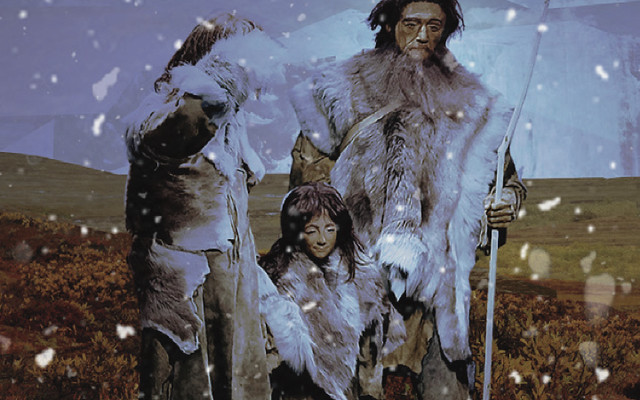European early modern humans (EEMH) in the context of the Upper Paleolithic in Europe refers to the early presence of anatomically modern humans in Europe. The term “early modern” is usually taken to include fossils of the Aurignacian, Gravettian, Solutrean and Magdalenian, extending throughout the Last Glacial Maximum (LGM), covering the period of roughly 45,000 to 15,000 years ago.[1] The description as “modern” is used as contrasting with the “archaic” Neanderthals which lived in Europe during 300,000 to 40,000 years ago.
The term EEMH is equivalent to Cro-Magnon Man, or Cro-Magnons, a term derived from the Cro-Magnon rock shelter in southwestern France, where the first EEMH were found in 1868. Louis Lartet (1869) proposed Homo sapiens fossilis as the systematic name for “Cro-Magnon Man”. W. K. Gregory (1921) proposed the subspecies name Homo sapiens cro-magnonensis. In literature published since the late 1990s, the term EEMH is generally preferred over the common name Cro-Magnon, which has no formal taxonomic status, as it refers neither to a species or subspecies nor to an archaeological phase or culture.[2][3]
The earliest known remains of EEMH can be dated to before 40,000 years ago (40 ka) with some certainty: those from Grotta del Cavallo in Italy, and from Kents Cavern in England, radiocarbon dated to 45–41 ka.[4] A number of other early fossils are dated close to or just after 40ka, including fossils found in Romania (Peștera cu Oase, 42–37 ka) and Russia (Kostenki-14, 40–35 ka).[5] The Siberian Ust’-Ishim man, dated to 45 ka, was not geographically found in Europe, and indeed is not part of the “Western Eurasian” genetic lineage, but intermediate between the Western Eurasian and East Asian lineages.[6]
The EEMH lineage in the European Mesolithic is also known as “West European Hunter-Gatherer” (WHG). These mesolithic hunter-gatherers emerge after the end of the LGM ca. 15 ka and are described as more gracile than the Upper Paleolithic Cro-Magnons.[7] The WHG lineage survives in contemporary Europeans, albeit only as a minor contribution overwhelmed by the later Neolithic and Bronze Age migrations.
(From Wikipedia, June 2018)


